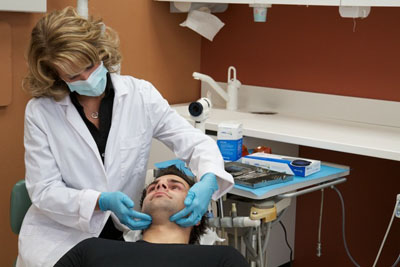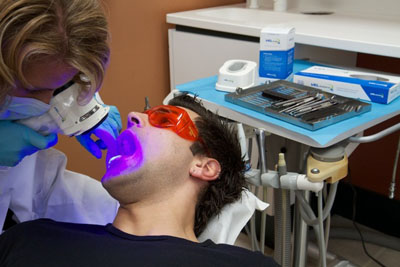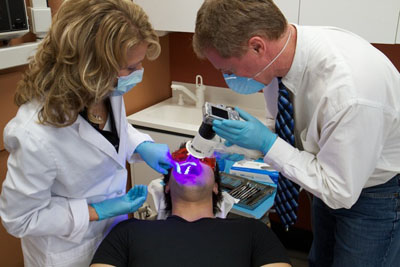Source: www.dentistryiq.com
Author: Nick Efthimiadis, Vice President, Sales & Marketing, LED Dental Inc.
As the intense media attention surrounding Michael Douglas’s illness clearly demonstrated, oral cancer is increasingly in the news these days. With the unfortunate growth in the number of relatively young people contracting the disease due to exposure to the sexually-transmitted human papilla virus — specifically, the HPV-16 strain — oral cancer will only become a bigger concern for both patients and dental practices over time. In fact, the Oral Cancer Foundation recently announced that HPV-16 has now replaced tobacco as the leading cause of this disease.
Sadly, one North American dies every hour of every day from oral cancer, and many of those who survive the disease are forced to deal with lengthy, painful treatment and permanent disfigurement. The main problem is that oral cancer is typically discovered in late stages, when the five-year survival rate is only around 30%.
The good news: when discovered early, the survival rate leaps to 80%-to-90%.
The key to early discovery is the dental practice. Ideally, each and every practice should be conducting a two-step oral cancer screening on all adult patients as part of their annual or semi-annual hygiene checkup. The first step consists of a conventional “white light” exam comprising visual inspection and palpation. The second step consists of examination with an adjunctive screening device. Fortunately, the two steps should take no more than five minutes combined.
For the past several years, the adjunctive device that has been used for more screenings than any other is the VELscope system. It is the first technology to be approved by the FDA and Health Canada to help clinicians detect cancerous and pre-cancerous lesions that might not be apparent to the naked eye. What made this possible is that the VELscope was also the first product to bring tissue fluorescence visualization technology to dentistry, and it is still the industry’s gold standard. In fact, since its 2006 launch, VELscope devices have been used to conduct over 10 million exams.
In many practices, both the conventional and VELscope screenings are conducted by the hygienist.
The VELscope handpiece shines a safe blue light into the oral cavity. When viewed through the VELscope’s patented filters, healthy tissue fluoresces green. Suspicious tissue, such as oral abnormalities that may be or may lead to dysplasia and oral cancer, has a different fluorescence signature and generally appears as a dark, irregularly shaped patch. If a suspicious lesion is detected, the hygienist will normally have the dentist view it using the VELscope as well. In some cases, questioning of the patient may reveal a logical explanation, such as a burn from hot coffee. If the lesion cannot be explained, the dentist will normally ask the patient to return for a follow-up screening in two or three weeks. If the condition has not improved, the dentist will usually perform a surgical biopsy or refer the patient to a specialist for a biopsy.
It is important to note that the VELscope is a discovery device, not a diagnostic device. Only a surgical biopsy can provide an accurate diagnosis of a lesion. In some cases the diagnosis will be cancer, pre-cancer or dysplasia, but more often some other type of oral disease will be diagnosed. Examples include lichen planus and bacterial, viral and fungal infections. While these conditions are clearly much less serious than cancer, they are conditions that need to be discovered and treated.
The latest and most advanced generation of VELscope technology was recently introduced. The VELscope Vx Enhanced Oral Assessment system does everything prior generations did, but features two dramatic improvements. First, it is cordless and lightweight, making it exceptionally portable. Second, the price has been cut roughly in half; in fact, its $2,499.99 regular price makes it possible for many practices to have a VELscope Vx in every operatory.
There are many other advantages of the VELscope Vx system:
* It is easy to incorporate into the practice.
* It is completely noninvasive for the patient, with no rinses, dyes or discomfort.
* Any suspicious lesions can be easily photo-documented and shared with specialists who might be conducting surgical biopsies.
* It gives the patient wonderful peace of mind, since the vast majority will be shown to have no issues.
* It reinforces the image of a state-of-the-art, caring dental practice concerned for the oral and systemic health of it patients.
* It is affordable for patients, as practices can charge $15 or even less per screening.
* It can easily pay for itself in two months or less, and after that it can earn the practice $10,000-to-$20,000 in extra profit each year.
* Most important, it just might help you save a patient’s life.
In addition, LED Dental has a comprehensive education program for practices that are considering purchasing the VELscope Vx, and an extensive training program for practices that have purchased the system.
Every day of their careers, hygienists provide a variety of very important services for their patients. Now those patients are potentially vulnerable to a very serious health threat, and many of those patients have no idea that this threat exists. And, as a result, hygienists now have an opportunity to have a more profound impact on the health and lives of their patients than ever before.
Source: DentistryIQ




Leave A Comment
You must be logged in to post a comment.